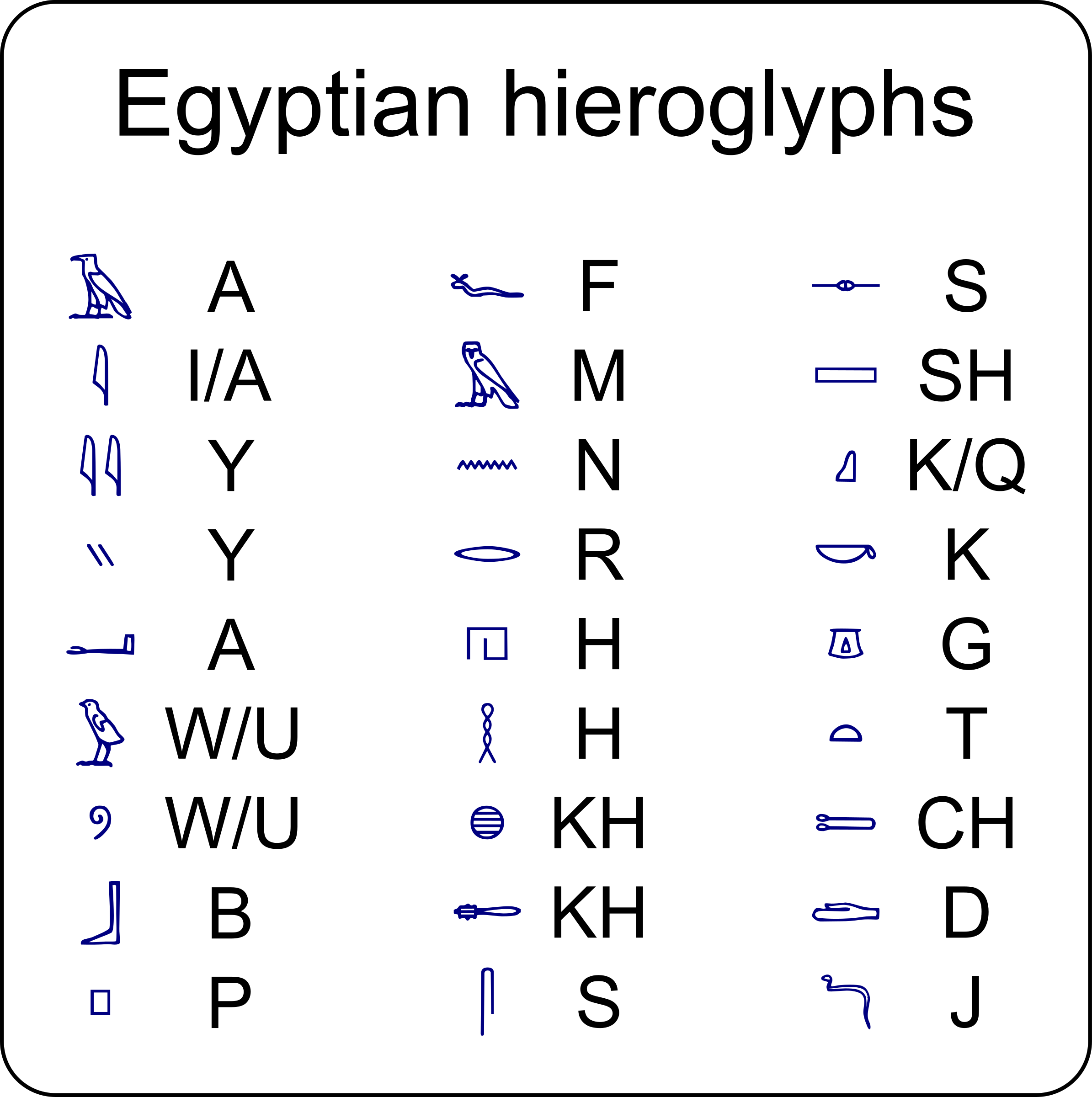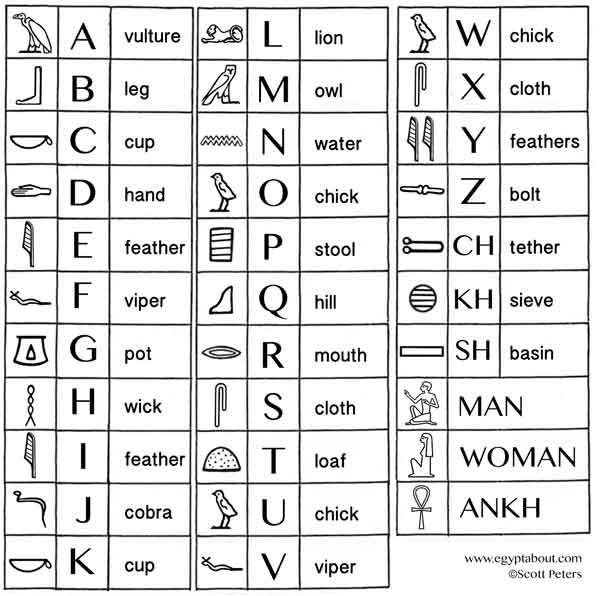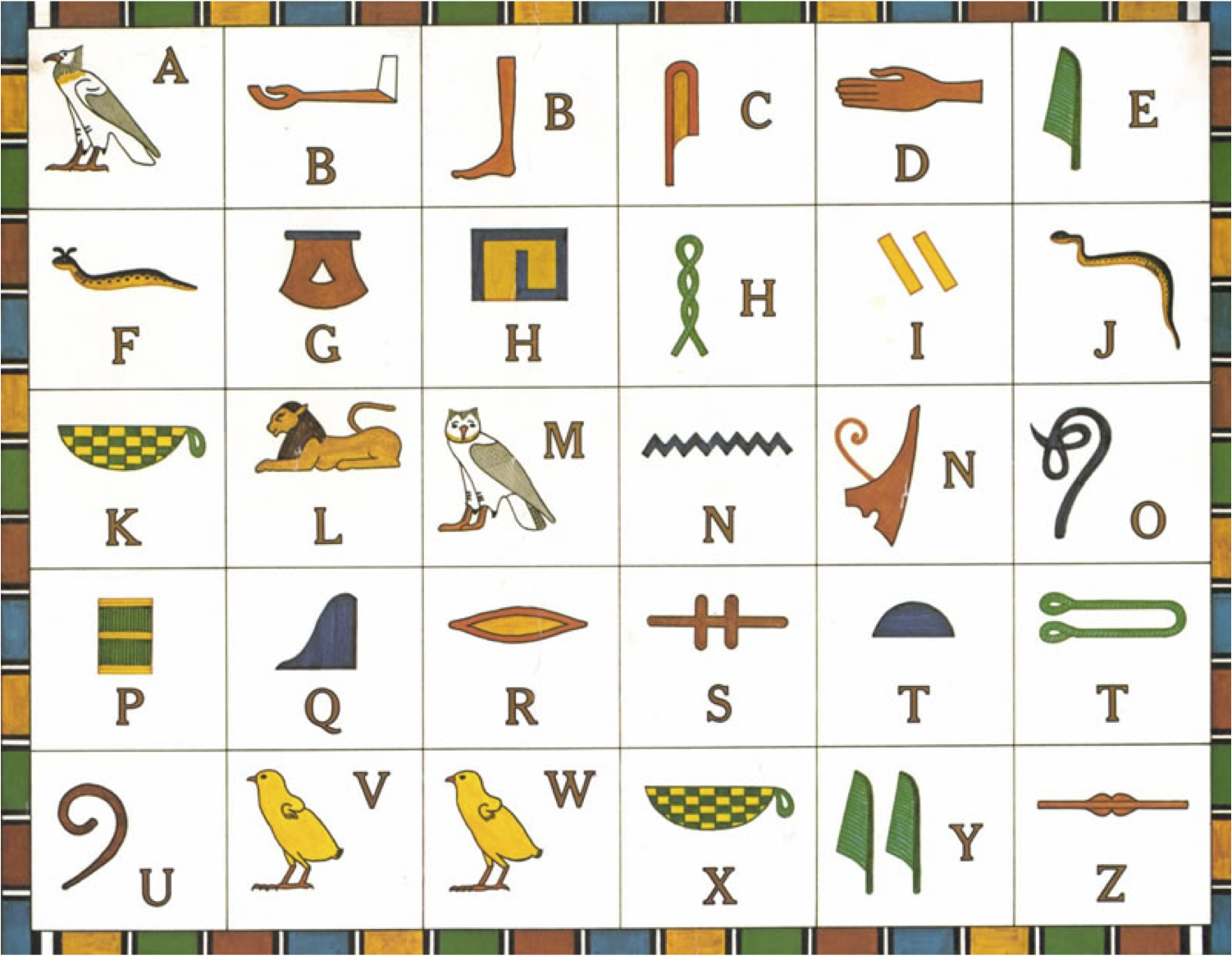Have you ever been fascinated by the ancient Egyptian hieroglyphs? These fascinating symbols have captivated the minds of people for centuries. In this post, we will explore the world of Egyptian hieroglyphics and delve deeper into their rich history and significance.
Ancient Egyptian Writing
The ancient Egyptians developed a complex system of writing known as hieroglyphics. This writing system, which dates back to around 3300 BCE, was primarily used by the Egyptians for sacred and religious purposes. Hieroglyphs were also used for monumental inscriptions, tombs, and important documents.
 The hieroglyphic script is composed of a combination of logographic, alphabetic, and syllabic symbols. These symbols represent objects, actions, sounds, or ideas and are written in a series of interconnected lines. The writing was usually read from right to left, and the directionality changed depending on the orientation of the symbols.
The hieroglyphic script is composed of a combination of logographic, alphabetic, and syllabic symbols. These symbols represent objects, actions, sounds, or ideas and are written in a series of interconnected lines. The writing was usually read from right to left, and the directionality changed depending on the orientation of the symbols.
Ancient Egyptian Hieroglyphics Alphabet
One interesting aspect of Egyptian hieroglyphics is that it had an alphabet. The hieroglyphic alphabet consisted of a combination of ideograms (symbols that represent whole words) and phonograms (symbols that represent sounds or syllables). This alphabet included over 700 unique signs and could be quite challenging to learn.
 To decipher hieroglyphics, scholars used a combination of clues from the Rosetta Stone and other artifacts. The Rosetta Stone, discovered in 1799, contained inscriptions in three different scripts: Greek, Egyptian hieroglyphics, and hieratic (a simplified form of hieroglyphics). By studying the Greek inscription, which was already known, scholars were able to unlock the secrets of the Egyptian hieroglyphics.
To decipher hieroglyphics, scholars used a combination of clues from the Rosetta Stone and other artifacts. The Rosetta Stone, discovered in 1799, contained inscriptions in three different scripts: Greek, Egyptian hieroglyphics, and hieratic (a simplified form of hieroglyphics). By studying the Greek inscription, which was already known, scholars were able to unlock the secrets of the Egyptian hieroglyphics.
Exploring Hieroglyphics
If you are interested in exploring hieroglyphics further, there are resources available to learn more about this ancient writing system. Many websites offer charts and alphabets that can help you understand and decipher hieroglyphics. You can find detailed charts online that provide a comprehensive list of hieroglyphic symbols and their corresponding meanings.
 Another interesting way to explore hieroglyphics is by visiting museums that specialize in ancient Egyptian artifacts. These museums often have exhibits dedicated to hieroglyphics, displaying ancient writings on papyrus scrolls, tomb walls, and various artifacts.
Another interesting way to explore hieroglyphics is by visiting museums that specialize in ancient Egyptian artifacts. These museums often have exhibits dedicated to hieroglyphics, displaying ancient writings on papyrus scrolls, tomb walls, and various artifacts.
The Beauty of Hieroglyphics
One cannot help but be in awe of the beauty and intricacy of Egyptian hieroglyphics. The symbols have a unique artistic quality that captures the essence of ancient Egyptian culture. They are not merely letters or numbers; they are artistic expressions that provide a glimpse into the beliefs, history, and daily lives of the ancient Egyptians.
 The images and symbols used in hieroglyphics can be quite fascinating. They depict various animals, gods, and objects that were important to the ancient Egyptians. Each symbol was carefully crafted and held a particular meaning, making hieroglyphics not just a form of writing but also a form of art.
The images and symbols used in hieroglyphics can be quite fascinating. They depict various animals, gods, and objects that were important to the ancient Egyptians. Each symbol was carefully crafted and held a particular meaning, making hieroglyphics not just a form of writing but also a form of art.
The Legacy of Hieroglyphics
Throughout history, the study of hieroglyphics has played a crucial role in understanding the ancient Egyptian civilization. It has provided insights into their religion, daily life, and societal structure. Hieroglyphics have allowed historians to reconstruct the history of ancient Egypt, deciphering the stories and wisdom left behind by this extraordinary civilization.
 In conclusion, Egyptian hieroglyphics are much more than just a system of writing. They are a testament to the ingenuity and creativity of the ancient Egyptians. Their beauty and complexity continue to capture the imagination of people worldwide, making hieroglyphics one of the most enduring symbols of ancient Egypt.
In conclusion, Egyptian hieroglyphics are much more than just a system of writing. They are a testament to the ingenuity and creativity of the ancient Egyptians. Their beauty and complexity continue to capture the imagination of people worldwide, making hieroglyphics one of the most enduring symbols of ancient Egypt.